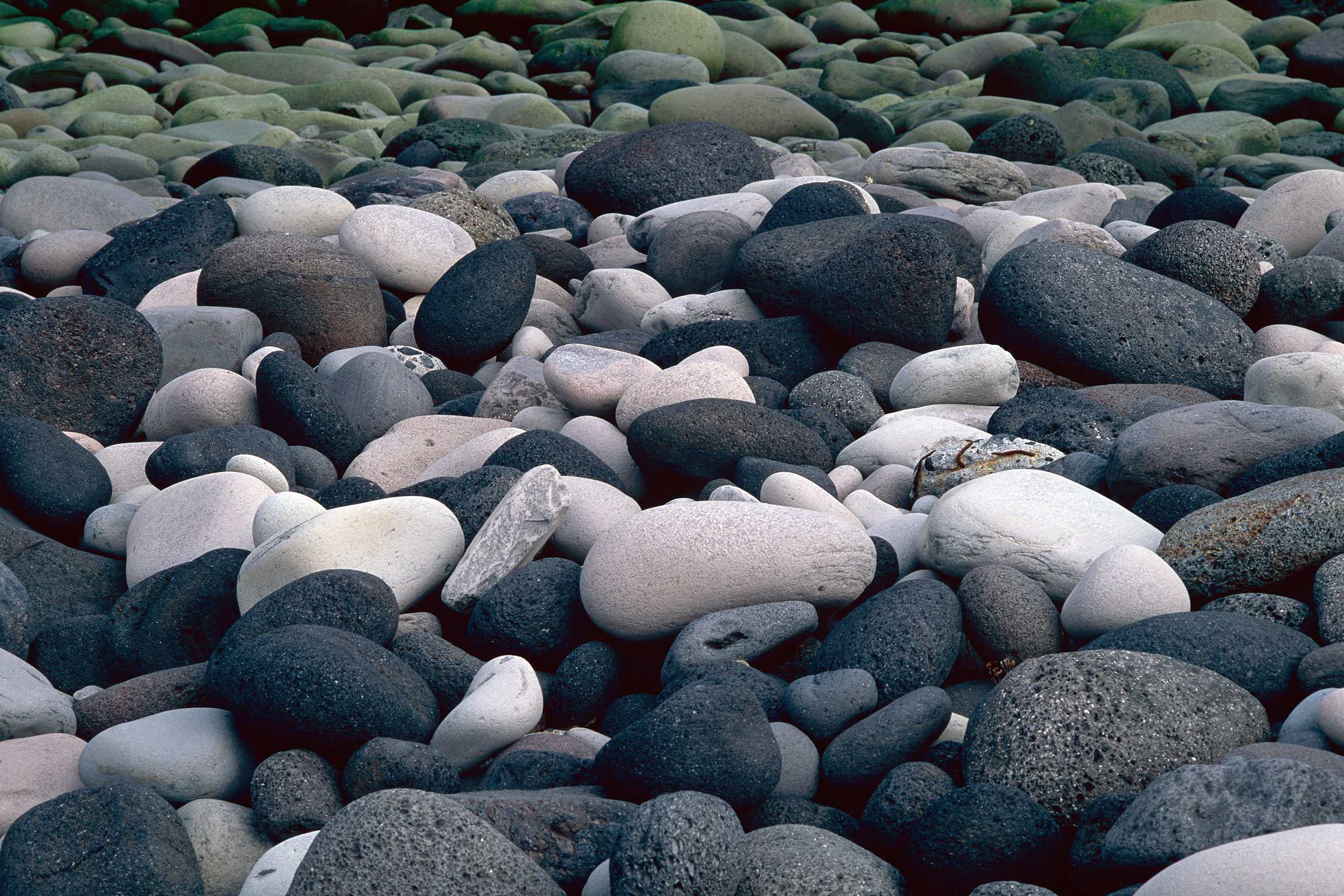Inspired by painter Franz Gertsch and his 'Blue Period', I created a series of monochrome landscape photographs of the Viamala region in the Swiss canton of Graubünden. My process synthesises digital imagery reduced to a monochrome blue with an old photographic printing process that was technically limited to blue and white.
[...]Paying tribute to my adopted home in Switzerland, my aim was to create mystical modern landscape images that do not show untouched nature, but depict traces of a centuries-old civilisation with sensitivity and respect.
And yet the motifs retain the pristine but rough and wild character of the scenery, where no rock is alike. The motifs reflect my own experiences in the mountains, of light and shadow, of clouds and wafts of fog. The viewer is rewarded by a closer look, which at times reveals secrets among the apparent hatchings: these could be icicles, blades of grass, animals or even people.
Exhibitions
- Galerie Bilder-Fuchs, Fulda 2024


Pizzas d'Anarosa
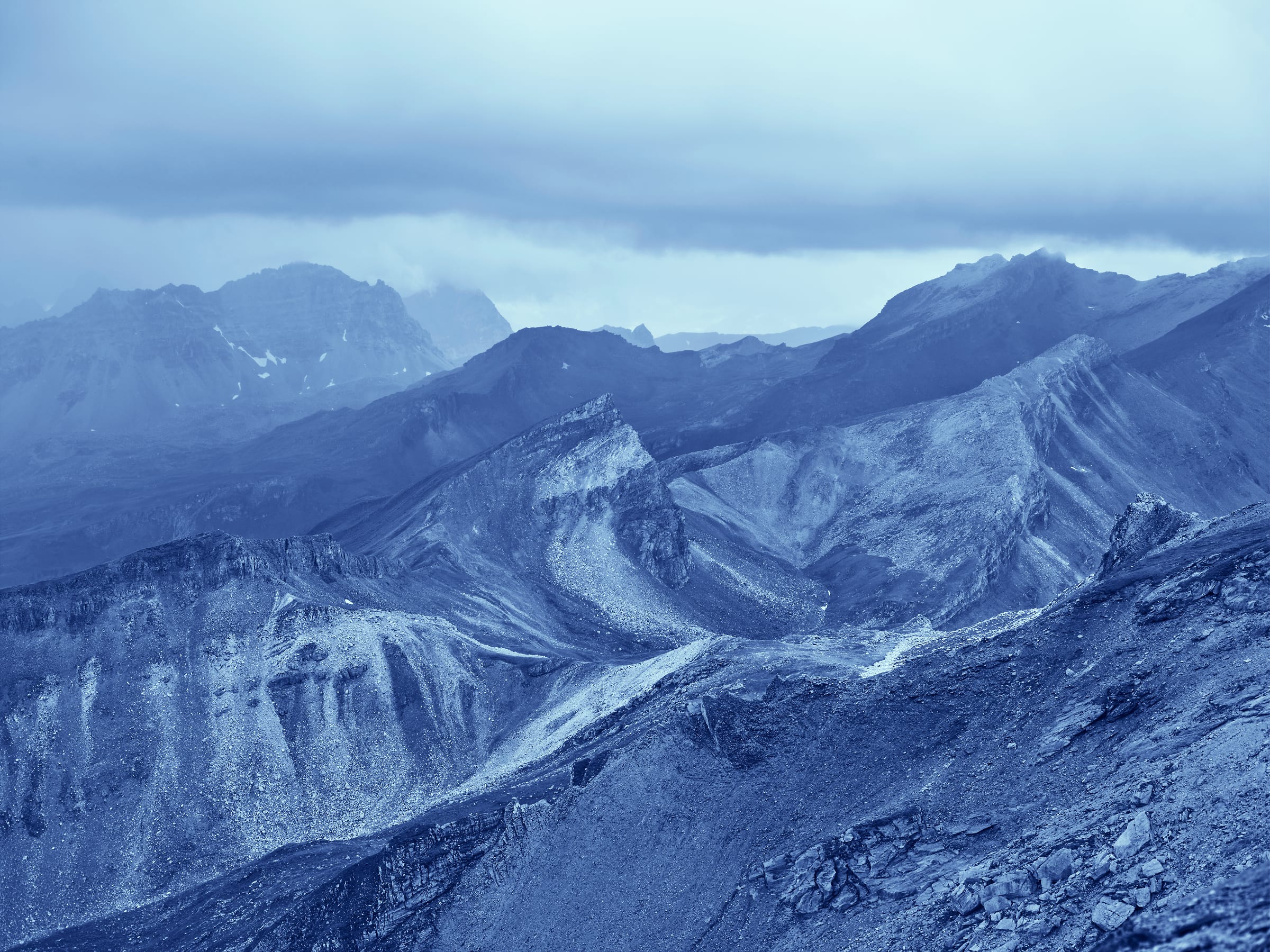
Tarantschun
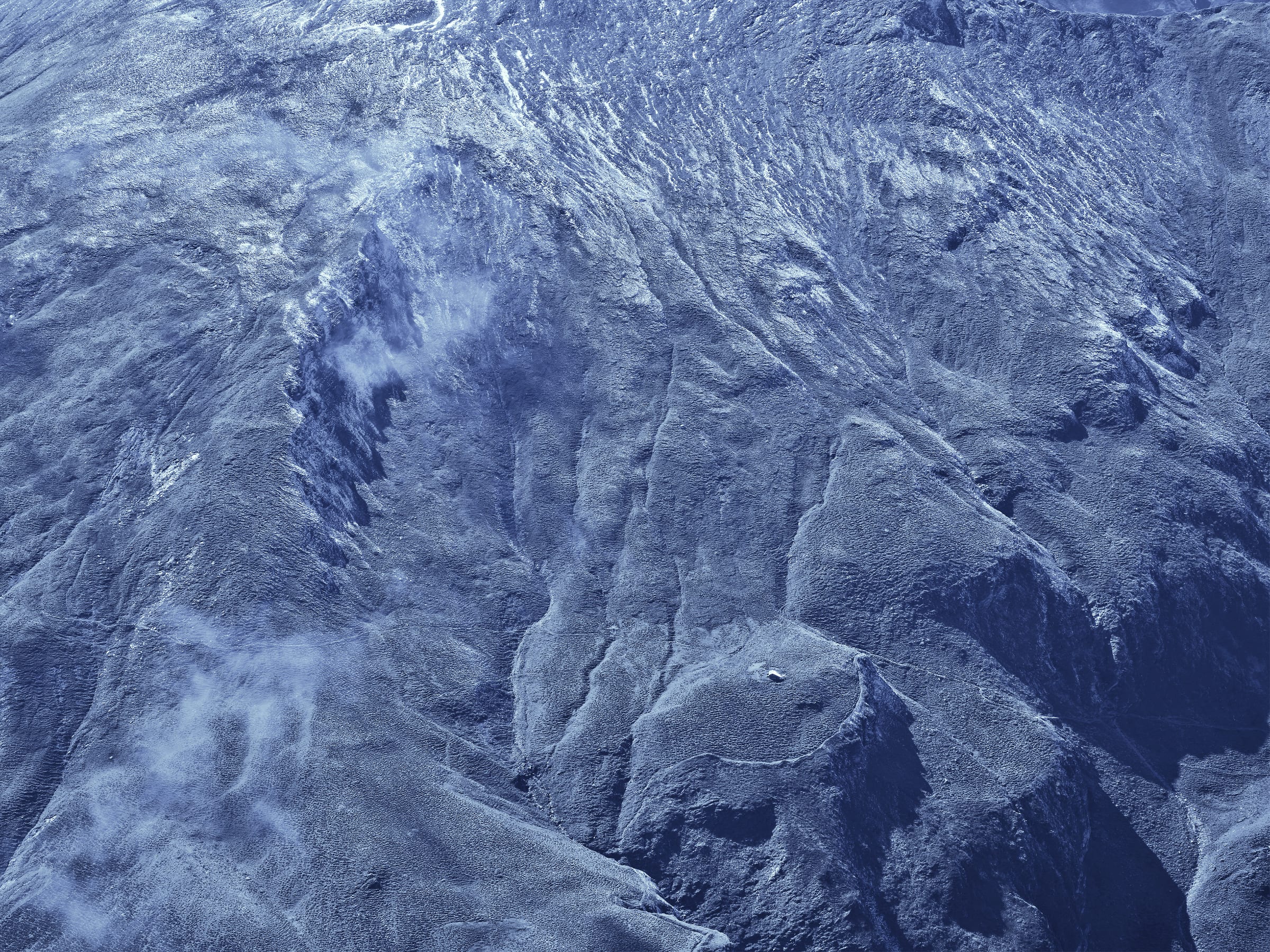
Alp Carnusa

Alp Anarosa 1

Alp Anarosa 2

Gaden Avers

Alp Mursenas
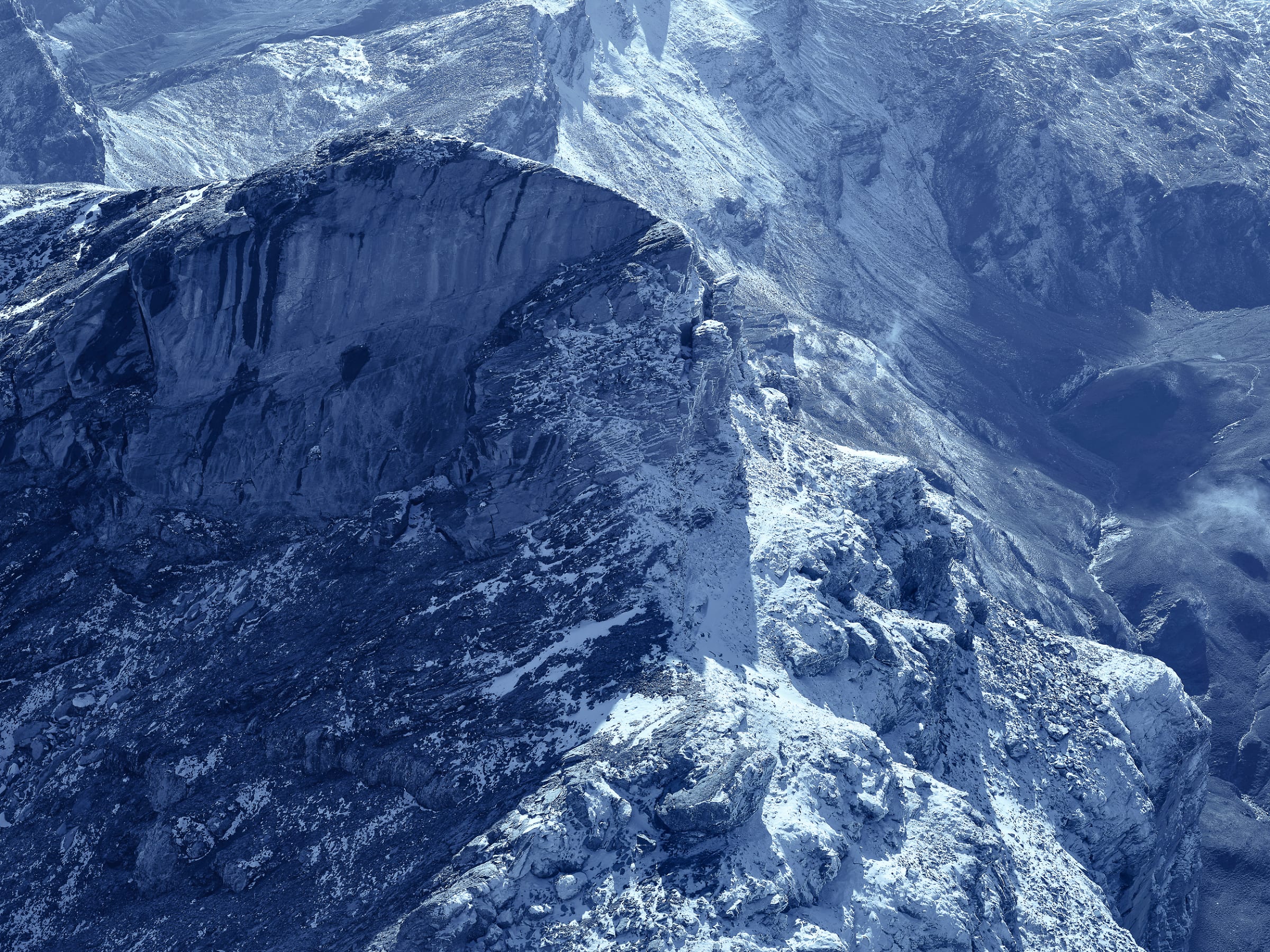
Beverin Lücke 1
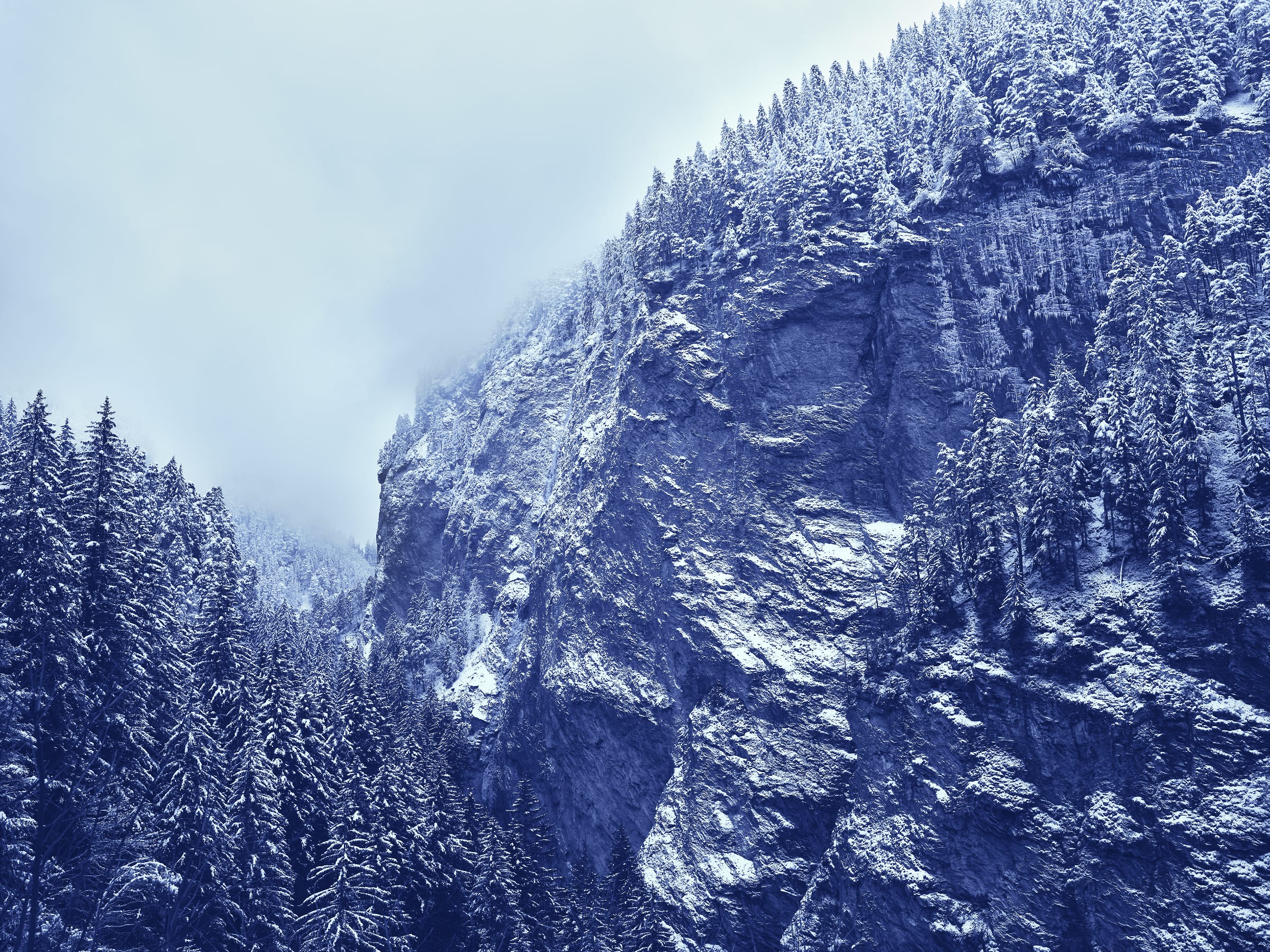
Viamala-Schlucht 1
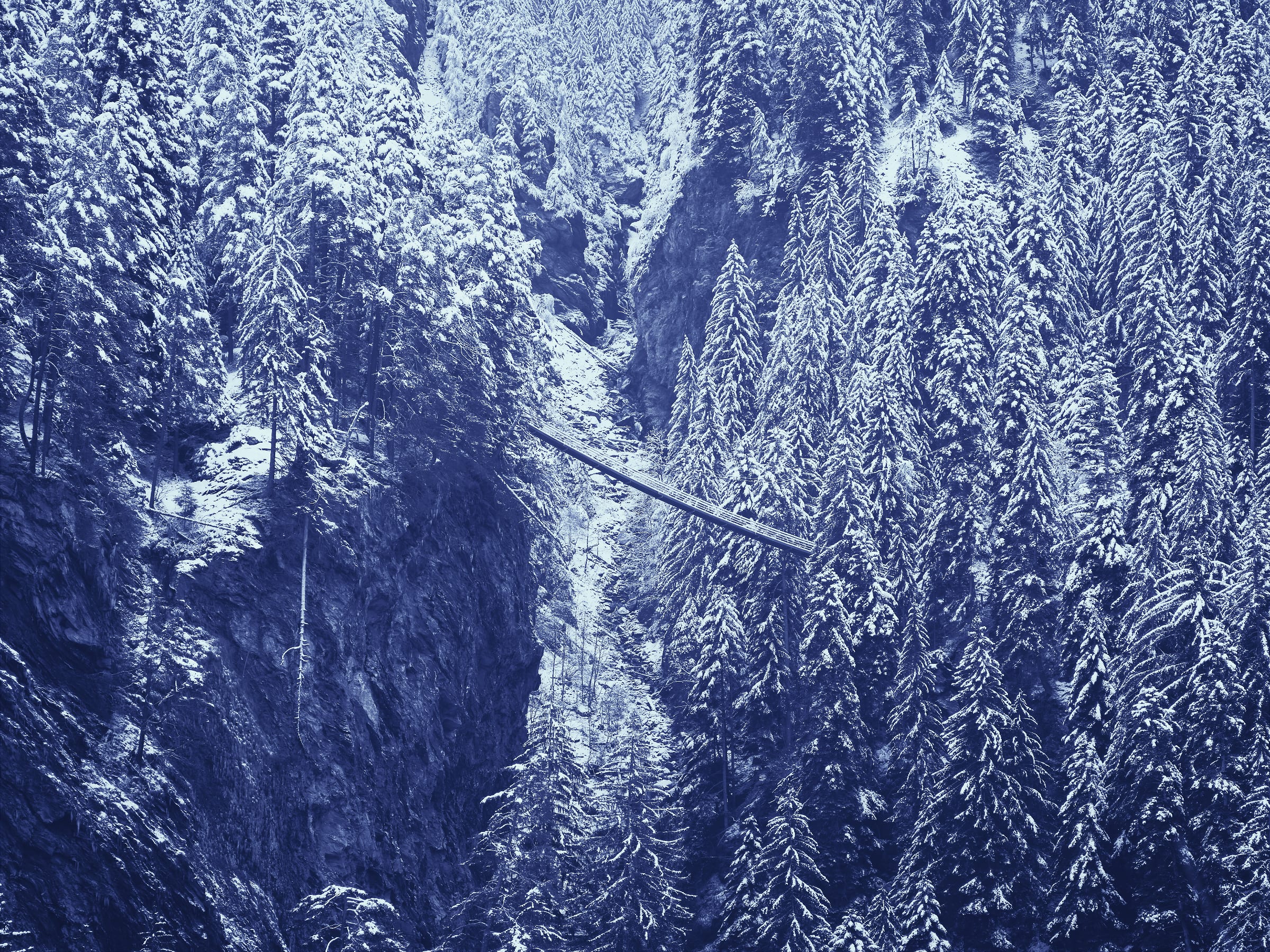
Viamala-Schlucht 2
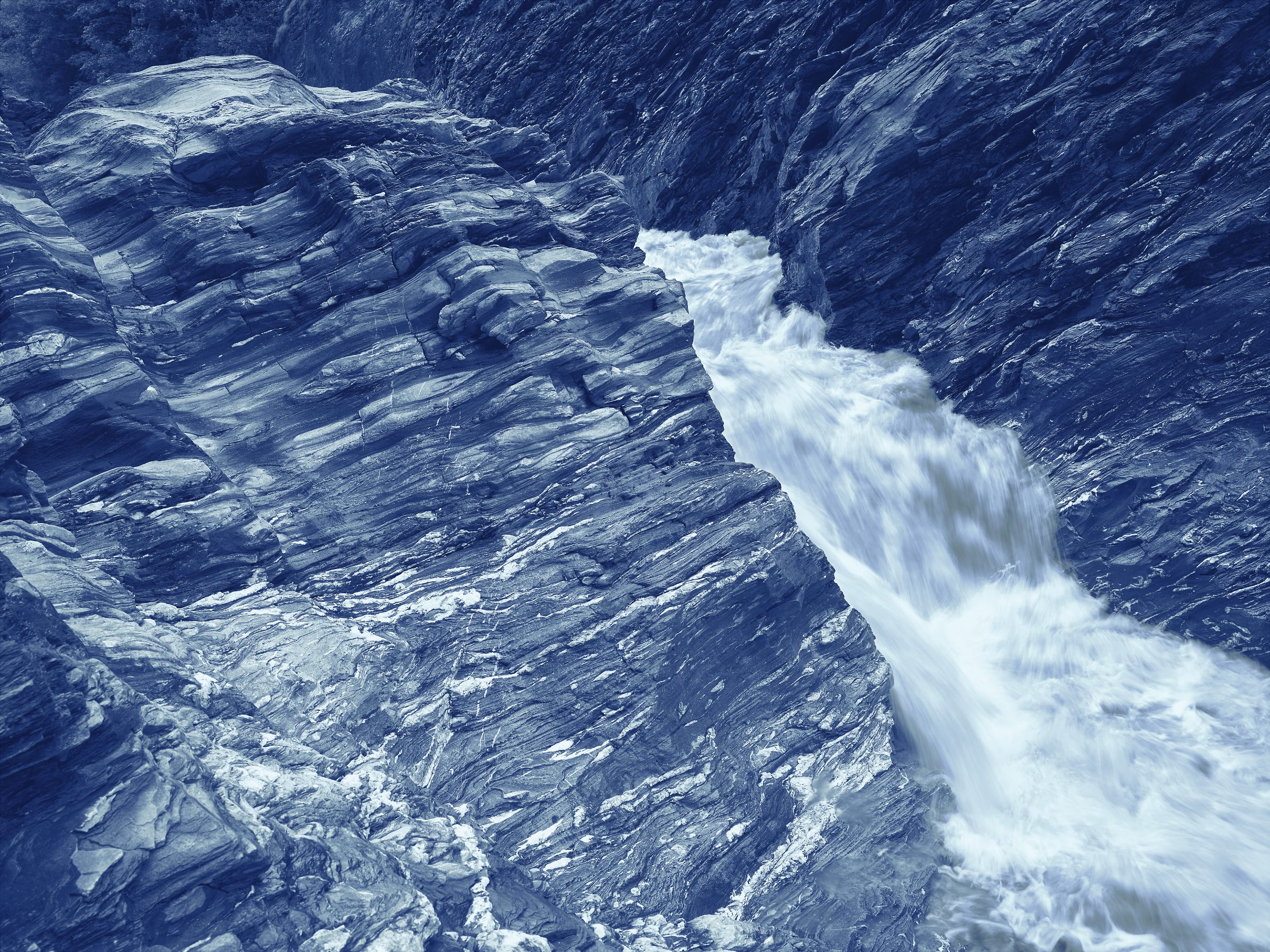
Junger Rhein
In the 21st century, humankind is walking on thin ice. Climate researchers predict that the polar sea ice will melt completely during the Arctic summer within the next three decades.
[...]In the Arctic, the average annual temperature is rising three times faster than the global average. This has unforeseen consequences for us humans, as the climate in the Arctic predominantly influences the weather of the northern hemisphere, where 90% of humanity lives. In autumn 2019, I was commissioned as a photographer by the Alfred Wegener Institute to join the largest scientific expedition of all time in the Arctic (MOSAiC) for 3 months. In the winter of 2019-2020, the German research vessel "Polarstern" and its international climate research team was intentionally frozen into the Arctic ice and drifted through the central Arctic.
Like large panoramic windows, my works allow viewers to immerse themselves in the scenery of the central Arctic. The large scale and richness of photographic detail showcase the beauty of the Arctic ice-landscape. The images also illustrate humankind's thirst for knowledge and research ingenuity, which allows us to understand the connections between climate change and our own actions to ultimately take effective measures to limit global warming.
The works also act as a reflection for viewers. As we recognise ourselves as the main cause of global warming we are challenged to critically question our own behaviour. If we do not respond quickly enough, my works may soon be among the last monumental visual documents of the Arctic sea ice around the North Pole.
Exhibitions
- KLIMA ARENA Sinsheim, from fall 2025
- Lichträume Fulda, from fall 2025
- Group Show „Into the Ice“, Deutsches Schifffahrtsmuseum, Bremerhaven 2022
- Alfred-Wegener-Institut (AWI), Bremerhaven, Permanent Exhibition 2021

Polarstern
A massive ice ridge near the North Pole dwarfs the distant German research icebreaker Polarstern.

Critical Freight
Incoming Polarstern crewmembers secure containers of critical freight to the bow of the Russian Icebreaker Kapitan Dranitsyn on their way to exchange expedition personnel and deliver supplies to the Polarstern near the North Pole.

Energy Fluxes
Atmospheric scientists adjust a sensor that measures near-surface turbulence over the ice. Data on turbulence-related energy fluxes is crucial to explaining their amplification in the Arctic and its impact on global warming.

Dive Robot
Sea-ice physicists lower a remote-controlled dive robot into the Arctic Ocean from the scientific base camp on the ice floe near the Polarstern. The robot will collect water samples and take images of the virtually unknown world below the Arctic ice.
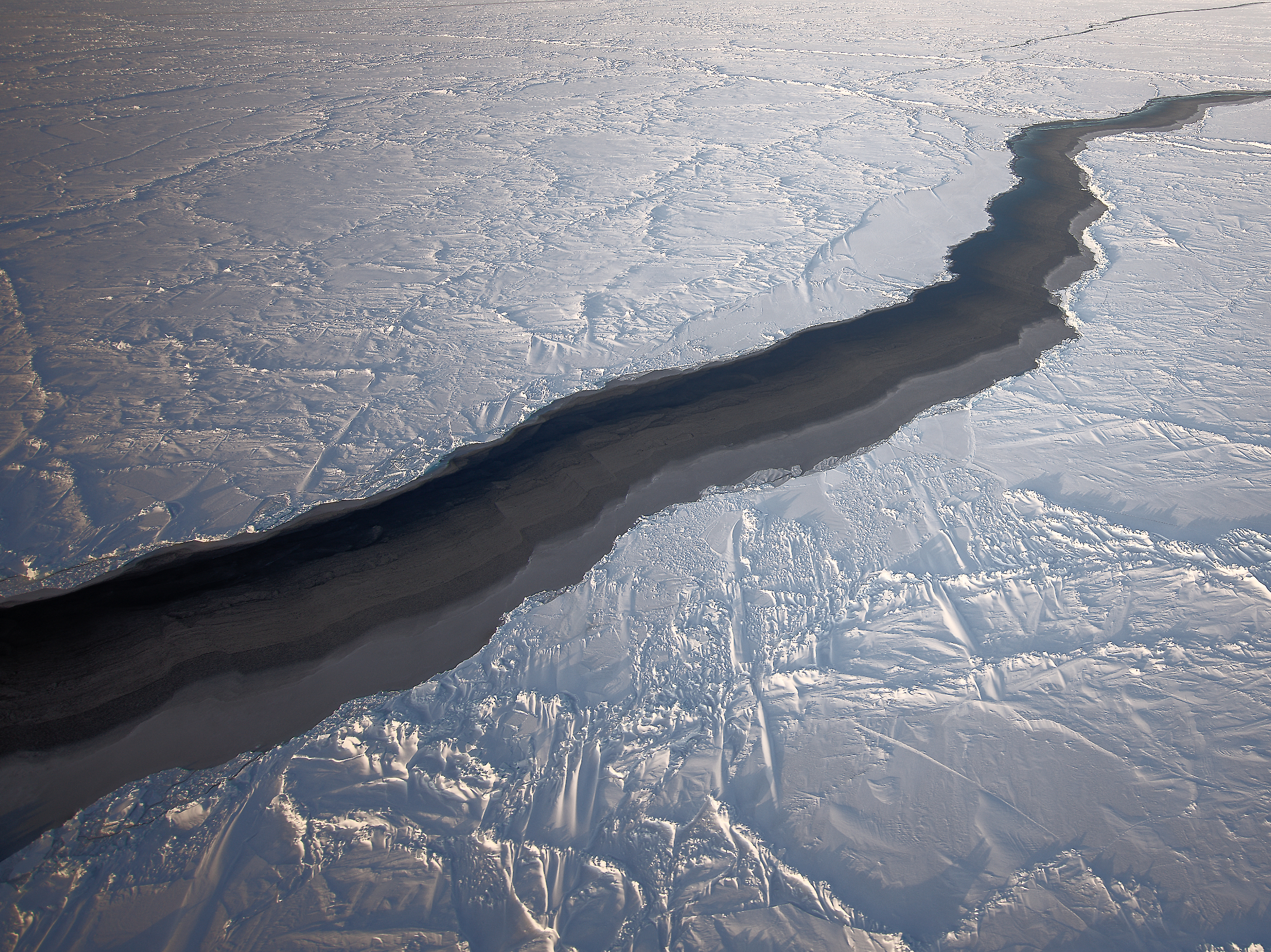
Lead
A substantial lead (large fracture) has opened in the Arctic iceshield near the North Pole, revealing the surface of the 4,000-meter deep Arctic Ocean. Leads naturally occur in the shifting Arctic ice, but their numbers have noticeably increased due to global warming.
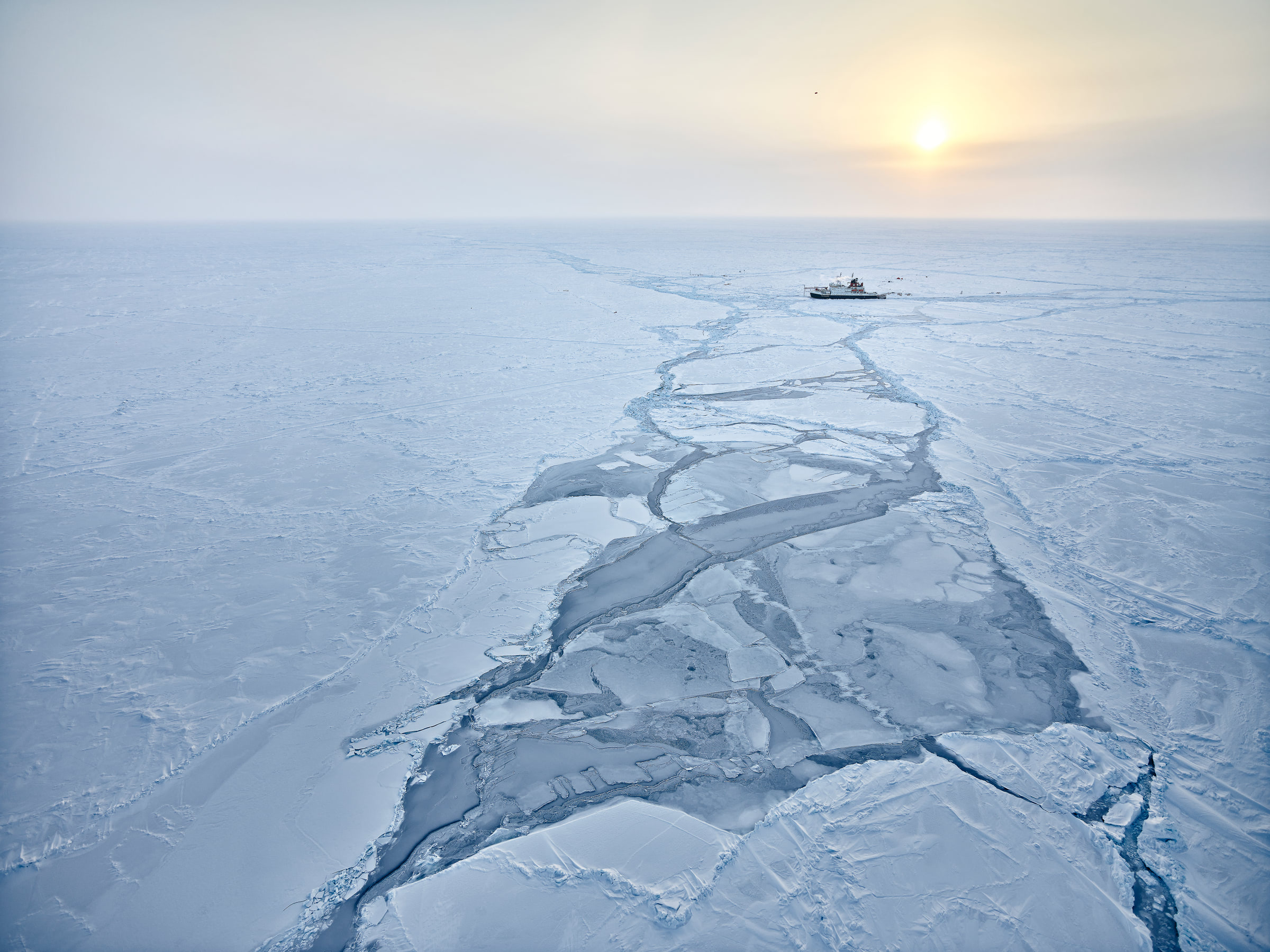
Adrift in Fading Ice
The German research icebreaker Polarstern drifts with the Arctic ice in March 2020, just as the rest of the world faced the first pandemic lockdown. Near the North Pole, the vessel was 1,000 kilometers away from any other point of civilization—even further than the International Space Station.

Ice-Coring
A Sea-ice physicist inspects an ice-coring drill head in the equipment storage room on board the Polarstern. Ice cores collected on the MOSAiC expedition will contain valuable data about climate-active trace gases and their movements within the Arctic ice and between the ice, ocean and atmosphere.
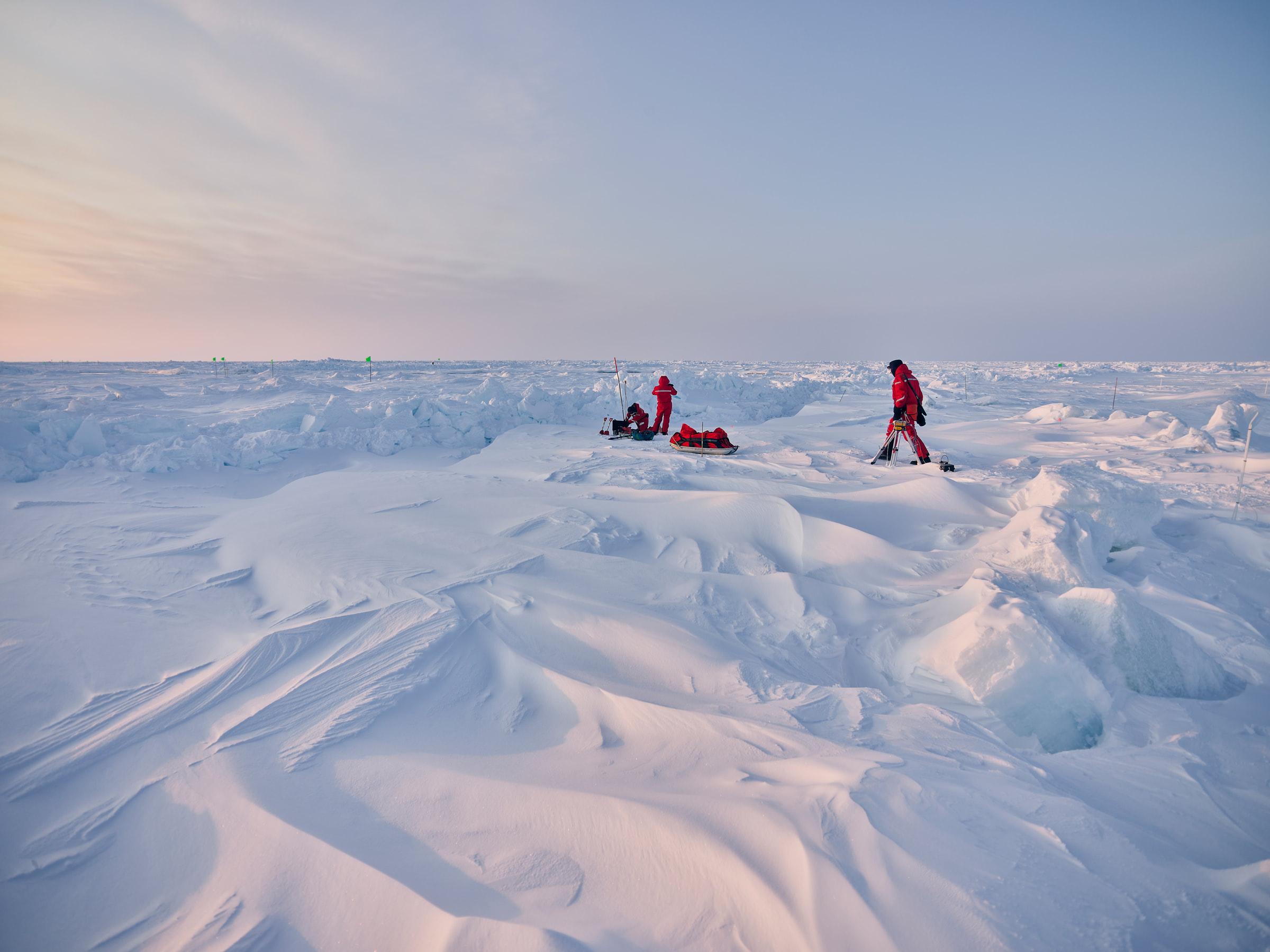
Albedo Effect
Sea-ice researchers and oceanographers install equipment to measure the Albedo Effect, which is the amount of sunlight reflected by the Arctic ice back into space. The white ice sheet reflects up to 85 percent of sunlight, thus preventing global warming.

On-board Lab
Scientists from the Biogeochemistry and Ecosystem teams at work in their laboratory on board the Polarstern. Their instruments measure the levels of oxygen, methane, and other gases that affect the Arctic climate.
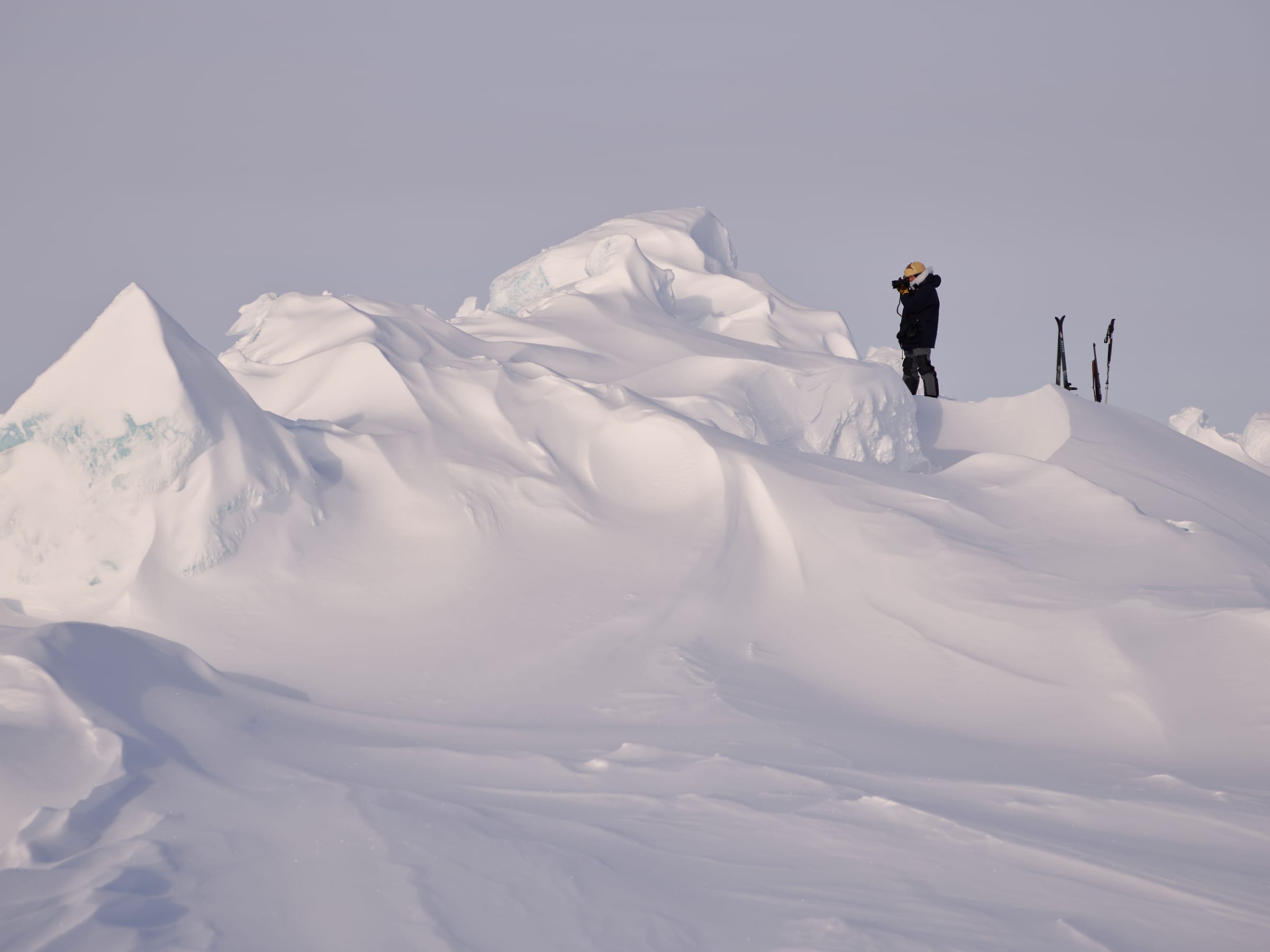
Arctic Scouting
Professional scouts ensure the best possible safety for all expedition members on the ice at all times. They explore the surroundings of the research camp and establish the safest routes through the dangerous, constantly changing sea ice. With their years of experience, they are also able to spot polar bears early and thus protect all involved individuals.
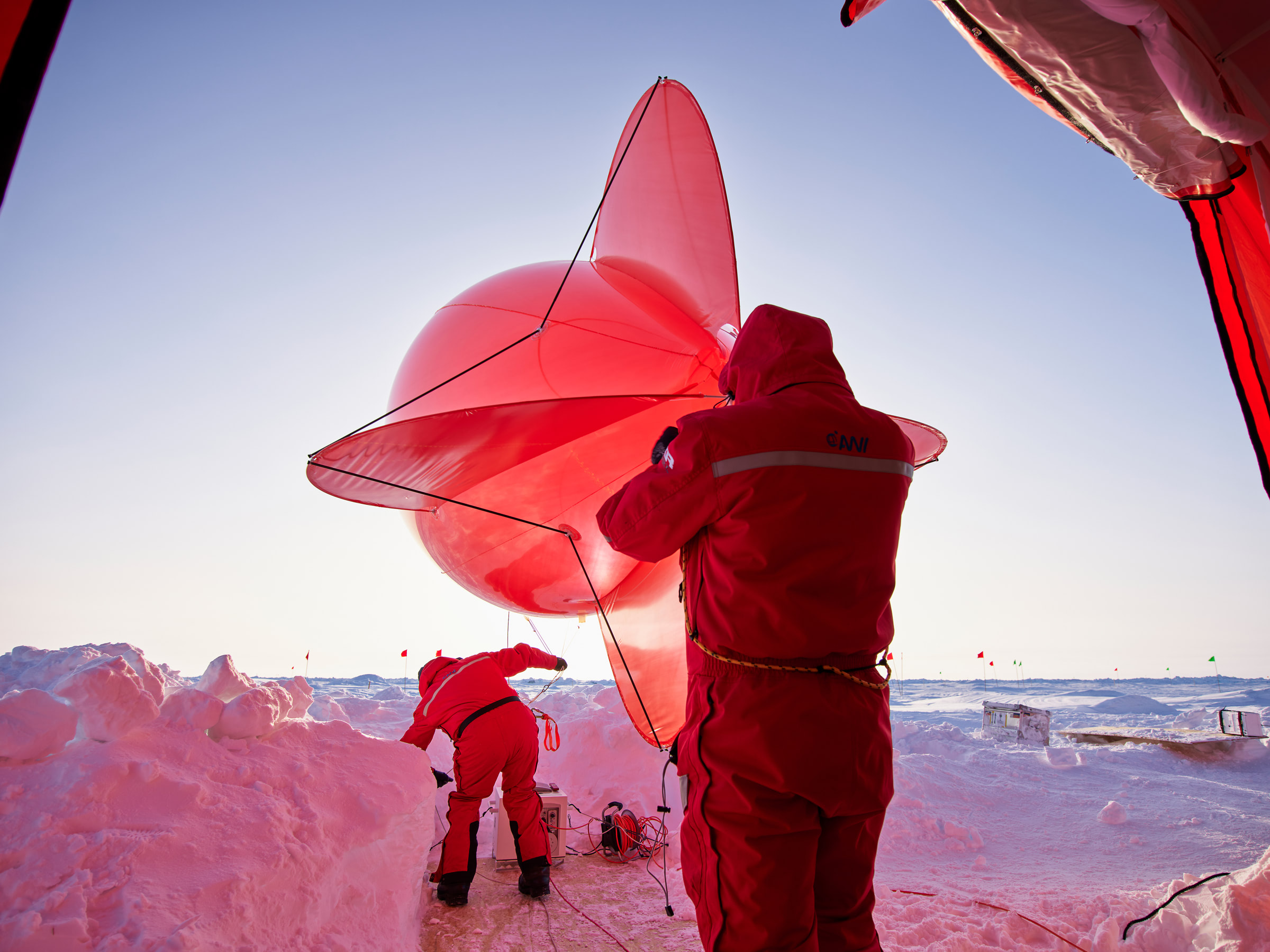
Miss Piggy
Atmospheric scientists prepare to launch an atmospheric balloon nicknamed Miss Piggy – a critical operation when wind speeds at ground level may not exceed 20 km/h. The balloon samples aerosols and detects tropospheric ozone in the atmosphere.
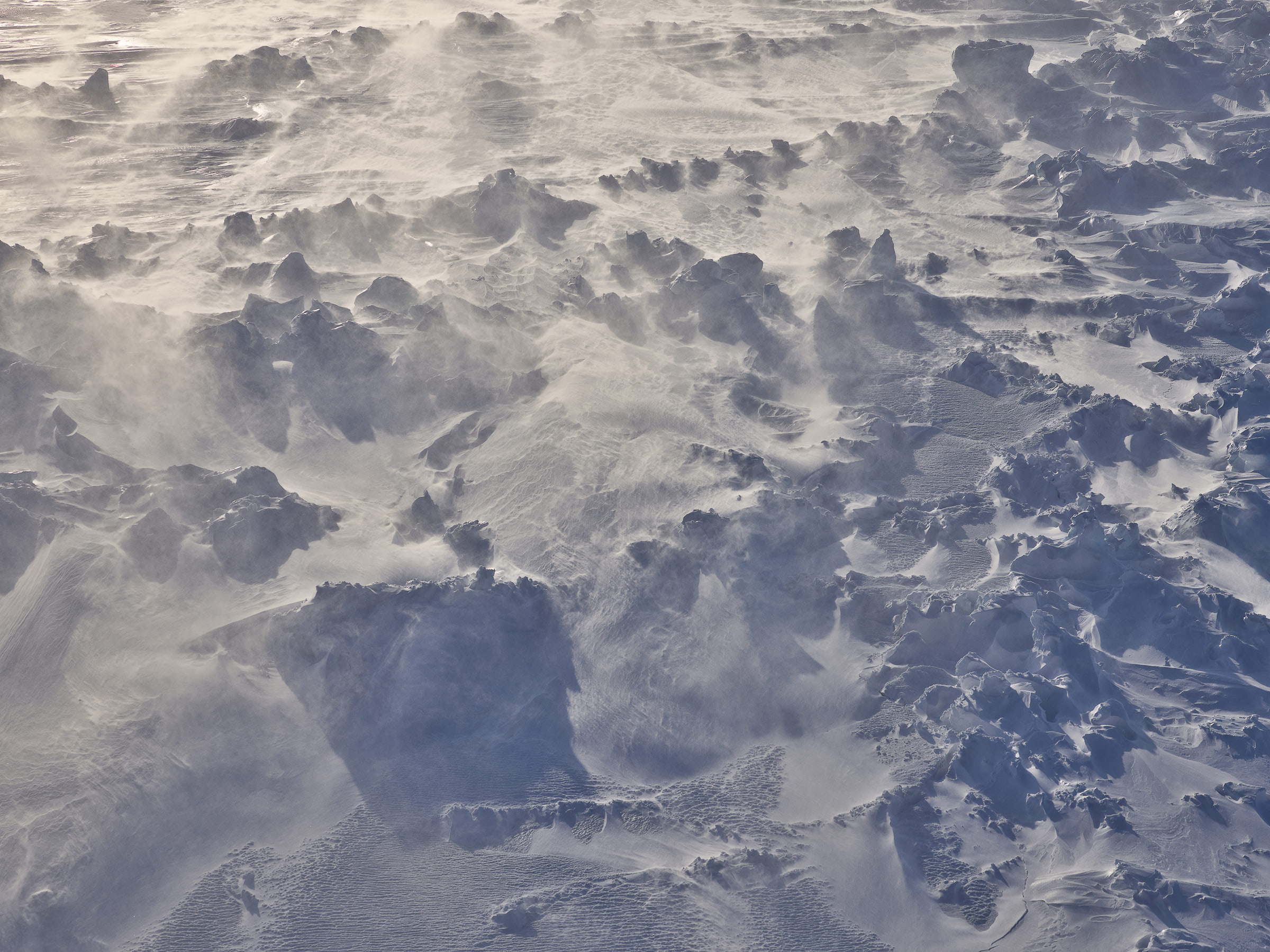
Arctic Storm
Ice ridges in an Arctic snow storm near the German research icebreaker Polarstern during the year-long MOSAiC expedition to the Arctic.
In February 2020, I accompanied the Russian crew of the icebreaker "Kapitan Dranitsyn" on their mission to bring new supplies to the MOSAiC expedition frozen into the Arctic ice.
[...]The photographs were taken under difficult conditions and are a moving portrait of a Russian community bound together by fate, from the captain to the ordinary sailors, on a mission pushing the boundaries of feasibility: Breaking through the vast ice of the arctic winter to bring provisions, equipment and new personnel to the MOSAiC expedition, drifting in the ice not far from the North Pole.
The portraits of the crew – from the captain to the ordinary sailors – tell stories of determination, melancholy and unwavering dedication. The completion of their mission was crucial to the survival of the largest Arctic expedition in history. It is these stories of sacrifice and humanity that characterise the "Breaking Ice, Breaking Records" project.
The project not only outlines the challenges of nature but also the impressive resilience and exceptional community of those who made this mission possible.

On deck at -40 °C
Work on deck is challenging due to extreme cold, 24-hour darkness and unpredictable Arctic storms. The crew must regularly clear passageways of ice and check that the supply containers are securely lashed to the deck.

On the bridge during ramming
While it sounds rough, pile driving in the pack ice is actually a delicate choreography performed by all personnel on the bridge. Once Chief Mate Igor Pridannikov (left) makes the strategic decisions about direction, pile driving angle and speed, Third Mate Andrei Sidelnikov (center) and Second Engineer Maxim Gora (right) carry out the orders with the rest of the crew.

Captain Alexandr Erpulev
At the helm of the Russian Icebreaker Kapitan Dranitsyn en route towards the North Pole stands Captain Alexandr Erpulev. After weeks of heavy icebreaking, the ship had navigated to the northernmost position ever achieved during winter but had yet not reached its final destination, the German research vessel Polarstern. This portrait, taken in February 2020, captures Erpulev in full concentration on completing his nautical masterstroke.

Charting the course
Again and again Second Mate Aleksandr Zhukovskii has to correct the icebreaker's course by following the instructions of Ice Consultant Evgeniy Makarov (in the background). When the press ice ridges become too thick, the Ice Consultant must search elsewhere for passable channels through the ice.

Under control
In the control center, Chief Engineer Tagir Sharafutdinov synchronizes the complex interaction of six diesel engines, the three propellers and their associated generators.

Will we make it?

In the workshop
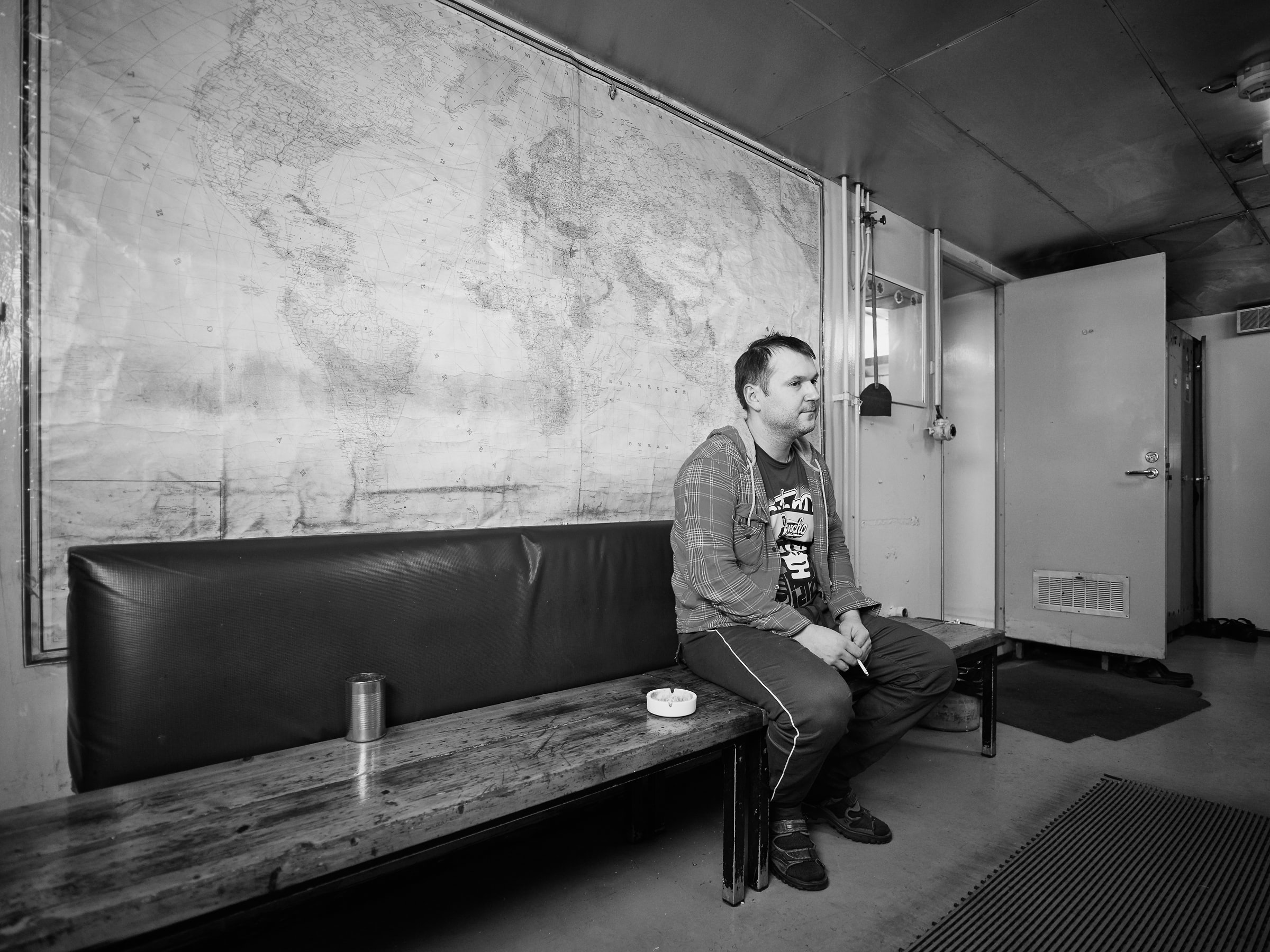
On a cigarette break
"auf draht" (wired) is more than just a photographic engagement with the delicate artworks of Polish artist Joanna Skurska. In my work, the copper wire becomes a symbol of the birth of telecommunications and at the same time a critical mirror of the modern world. In an era where we are continuously "wired" – always reachable and connected – my photographs question the ambivalences of this connection.
[...]In the vastness of the UNESCO Biosphere Reserve Rhön, Joanna Skurska's fragile wire sculptures – delicate creations that combine movement and form - were worn on women's bodies for the first time. Their posture tells a story of both liberation and constraint. The images reflect the complexity of our modern lives: the freedom of being connected and the growing confinement brought about by this constant availability.
Exhibitions
- Museum für Kommunikation, Berlin 2014
"Icelandscapes" is a collection of 30 years of photographic exploration of one of the most fascinating landscapes on Earth – Iceland. These analogue works show glaciers, volcanoes, and the North Sea, which are the dominant elements shaping the island. However, the landscapes I documented no longer exist in this form – they are constantly changing due to climate change, erosion, and volcanism.
[...]These photographs are not only snapshots of a changing nature but also a silent commentary on the fragility and impermanence of landscapes. The cycle invites the viewer to immerse themselves in Iceland's pristine beauty while contemplating the unstoppable nature of change.
Exhibitions
- Group Show "Island - Berlin - eine fotografische Zeitreise", Kunstraum Heinrichstrasse, Fulda 2019
- Vonderau Museum, Fulda, as part of the arts and culture program "Fabulous Iceland – Guest of Honour at the Frankfurt Book Fair 2011"

Gletscherzunge des Skaftafellsjokull
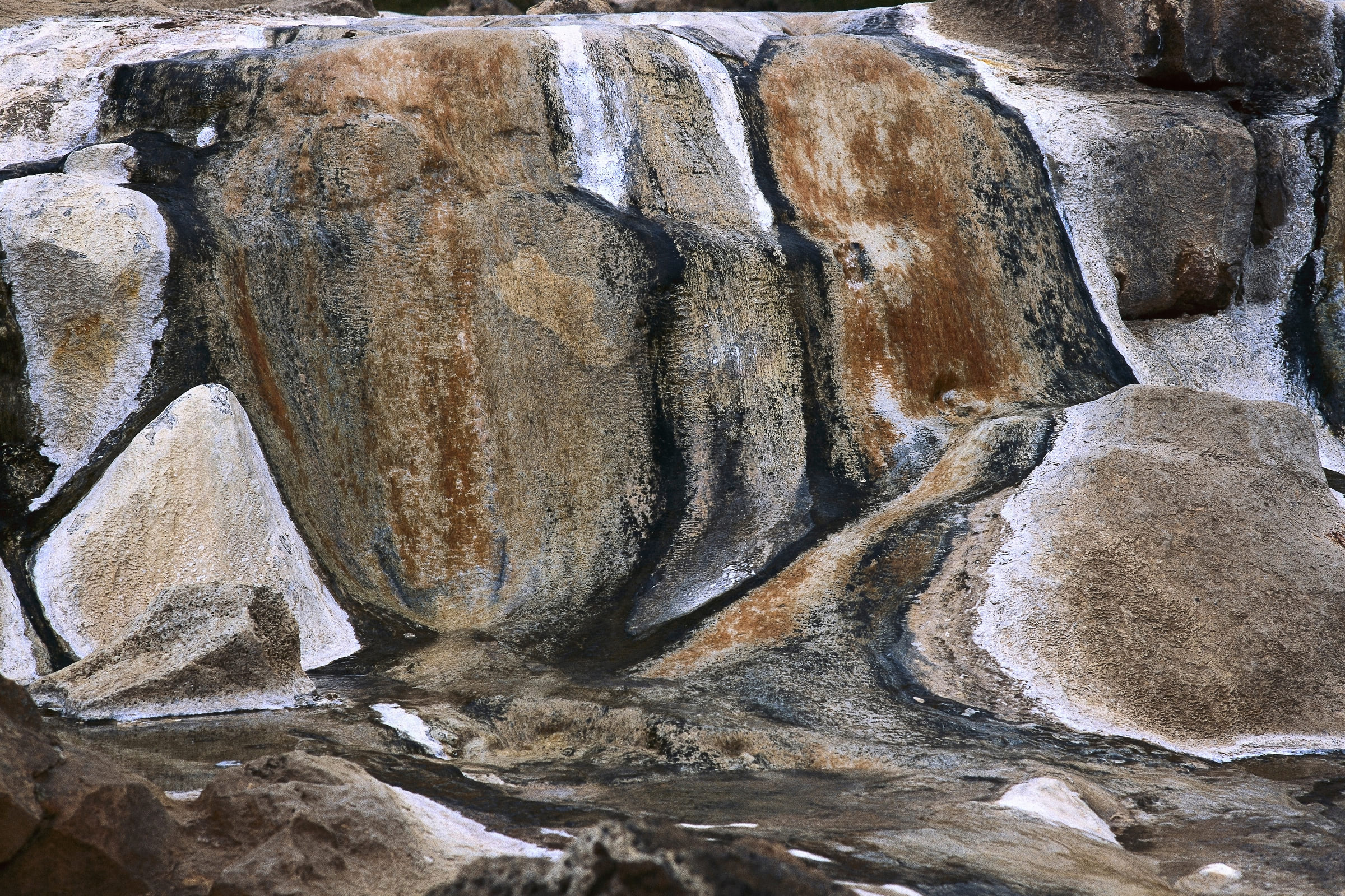
Sinterterrassen nahe Hveravellir
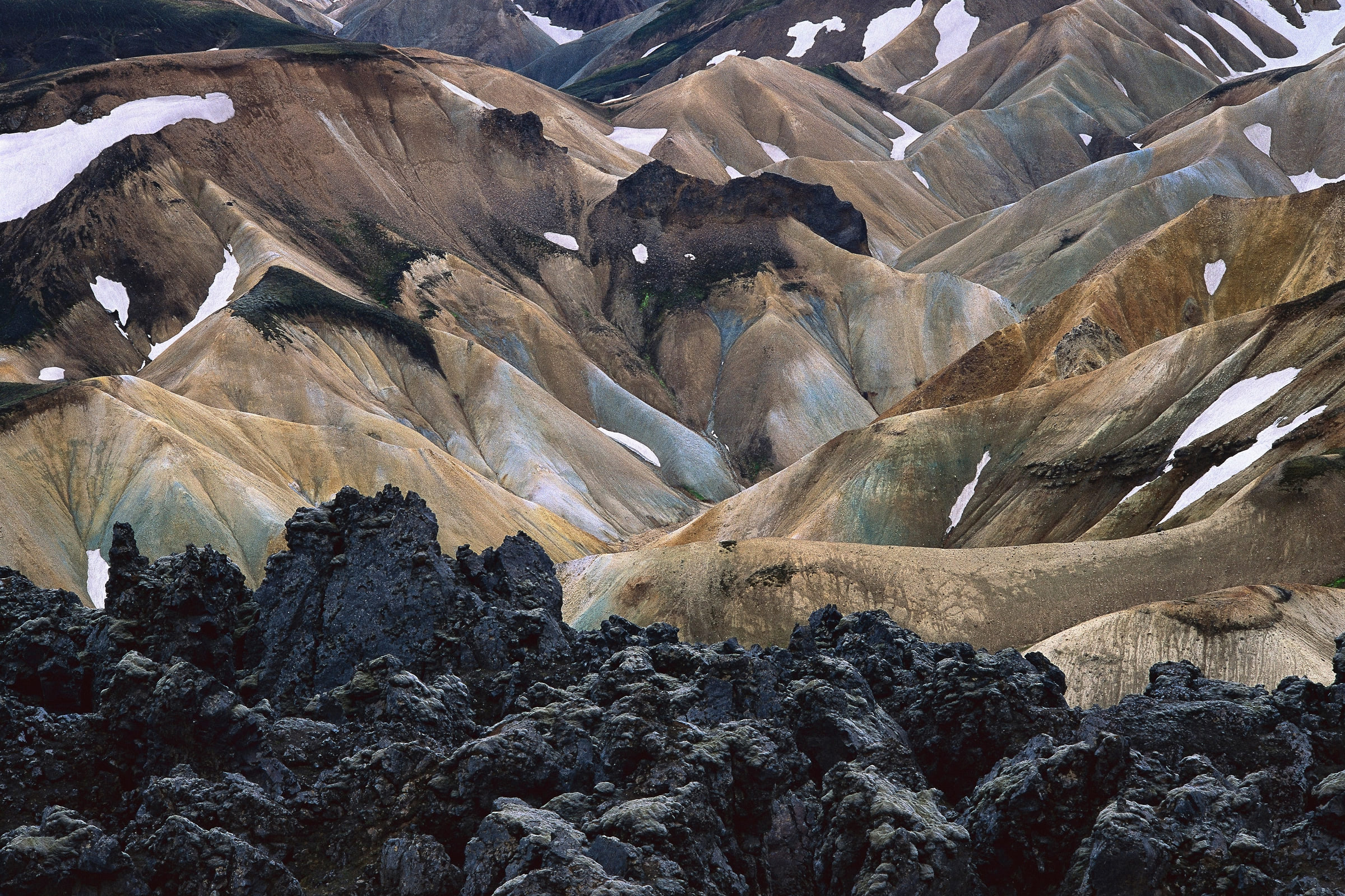
In der Landmannalaugar 1

In der Landmannalaugar 2
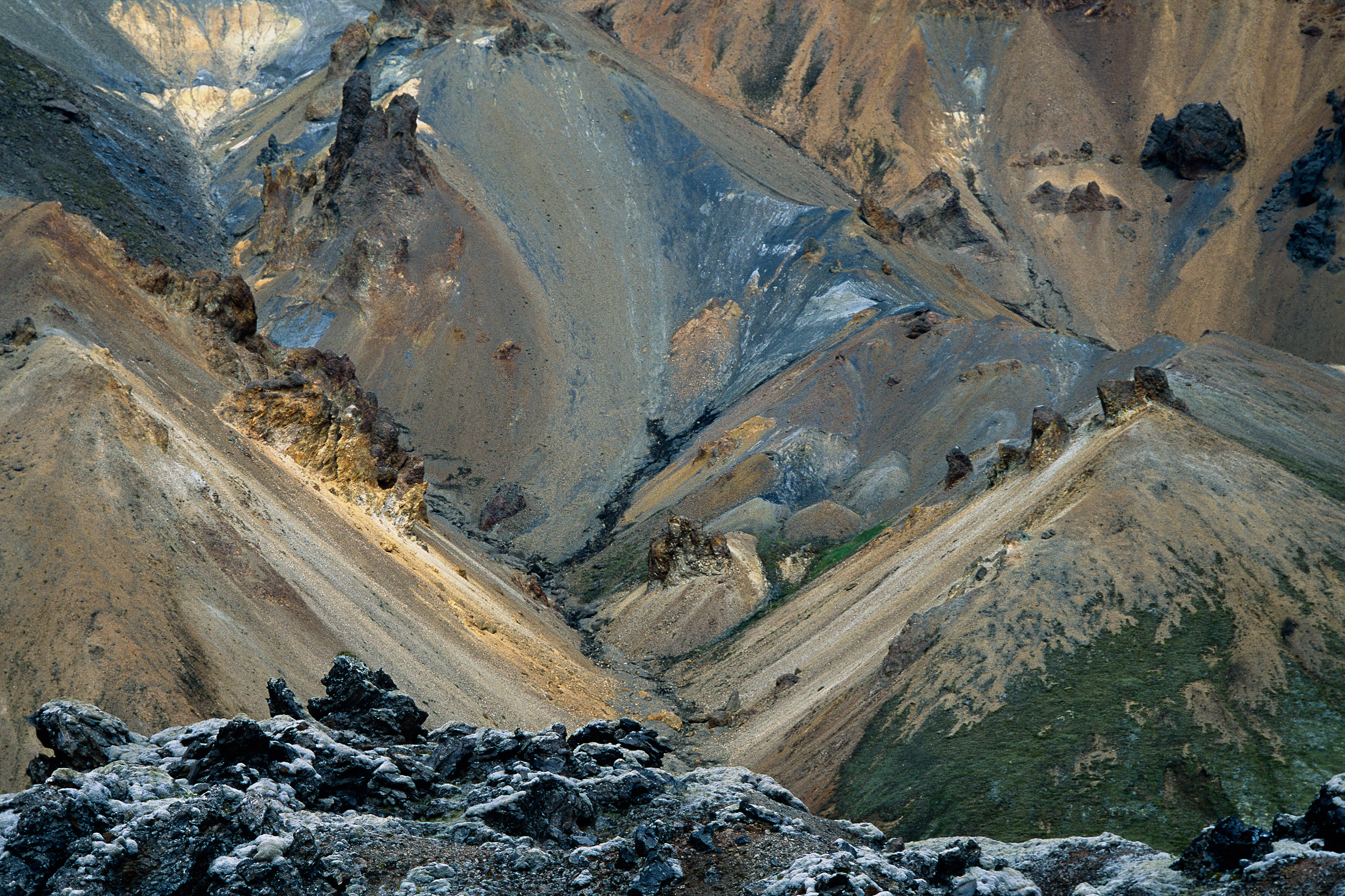
In der Landmannalaugar 3

Lavastrand Südküste

Lavastrom an der Krafla
